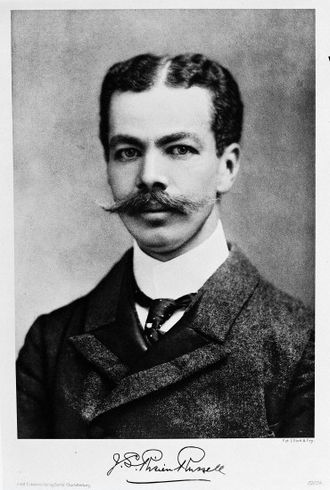Many of us enjoy a light hearted dispute about the relative merits of north and south London. It would be rare however these days for any north Londoner to make as disparaging an attack on the south as the historian, Walter Besant. In 1910, Besant wrote:
“In South London there are two millions of people. It is therefore one of the great cities of the world……….it is a city without a municipality, without a centre, without a civic history; it has no newspapers, magazines, or journals; it has no university; it has no colleges, apart from medicine; it has no intellectual, artistic, scientific, musical, literary centre—unless the Crystal Palace can be considered a centre.. …….it has no theatres, except of a very popular or humble kind; it has no clubs, it has no public buildings, it has no West End”
Gosh. A damning indictment indeed and probably unfair (had he never heard of Dulwich Picture Gallery?) but at least he made an exception of the Crystal Palace.
The driving force behind Crystal Palace’s success was George Grove (pictured) who was appointed Secretary to the Crystal Palace Company when Joseph Paxton’s Hyde Park exhibition centre was dismantled and reconstructed in Sydenham as a centre for education, the arts and leisure. The Palace was particularly noteable as a concert venue.
Hopes for the new Crystal Palace as a musical centre had an inauspicious start because preparations for the opening ceremony had overlooked any musical acts. At the last minute George Grove engaged a wind band and appointed a German conductor, Heinrich Schallehn, who managed to cobble together an acceptable performance. Within a year Schallehn’s replacement, August Manns, together with George Grove, had developed the band into a full-sized symphony orchestra.
In February 1856 the Orchestra, gave a performance of Schumann’s 4th Symphony, considered at the time to be an almost impossible work for even the most experienced orchestra. Groves and Manns created the finest orchestra the country had ever known, providing regular Saturday afternoon concerts to a discerning and influential audience.
Composers and musicians who came to perform at the Palace included Meyerbeer, Clara Schumann (a regular soloist) Gounod, Bruckner, Bruch, Massenet, Saint-Saens, Dvorak, Liszt and Paderewski. The orchestra performed new works by Brahms, Wagner, Berlioz and Strauss, providing a unique opportunity for aspiring British musicians to perform.
One Englishman wrote in the last decade of the 19th century:
“I lived about 120 miles from London. I rose at six, walked a mile to the station, the train left at seven, arrived at Paddington at eleven, underground to Victoria, on to the Palace……..arriving back at 10.30pm……a strenuous day indeed; but a new work had been heard and another treasure added to life’s experience”.
His name was Edward Elgar.
Sadly, Elgar was overlooked by Manns; the chief hopes of British music at the Palace rested on the shoulders of W S Gilbert’s colleague, Arthur Sullivan. Sullivan had sung in the choir at the opening ceremony in 1852. Manns liked his graduation piece of incidental music to ‘The Tempest’ and made it the centrepiece of his concert in April 1862. “At the conclusion there was a loud call for the composer who being led forward by Herr Manns, was greeted with the heartiest applause on all sides”. It established Sullivan’s reputation and his music was regularly performed at the Palace. In the month after his death in November 1900 there took place at the Palace a memorial concert of Sullivan’s music , sadly one of the last major musical occasions at the venue.
Learn more about Arthur Sullican on the ‘Cultural Tour of Embankment and Strand’ walking tour.
So, Mr Besant, thank you for your observations on south London….duly noted….but you did make the correct exemption. Up the Palace!



